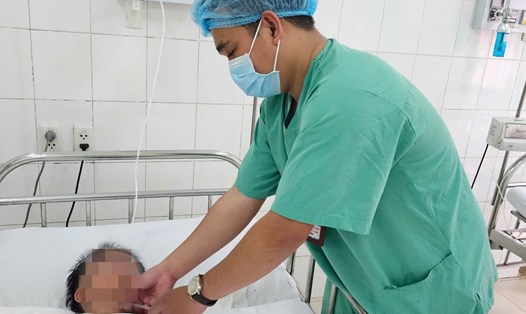The Ministry of Health issued a decision on Guidelines for diagnosis and treatment of seasonal flu. Accordingly, additional guidance on treatment and prevention of seasonal flu, withdrawal of quarantine regulations, and updating new drugs.
The adjustment of professional guidelines on seasonal flu has just been issued by the Ministry of Health, adding many important points in symptoms identification, disease classification, treatment as well as infection prevention. Notably, the regulation on "medical isolation and timely notification to preventive health agencies" has been removed from the principle of infection prevention.
Clarifying signs of disease and serious situations
seasonal flu has a incubation period of 1 to 4 days, often starting suddenly with fever, chills, headaches, muscle pain, fatigue, cough, sore throat, nasal congestion. Children may feel nauseous and diarrhea, while people over 65 often have atypical symptoms. Most of the disease recovers on its own after 3 to 5 days but can also progress severely with pneumonia, respiratory failure or underlying outbreaks such as asthma, COPD, heart failure.
Diagnosis by rapid testing and PCR
New additions to testing include: screening test, RT-PCR or Multiplex-PCR to determine virus strains. In case of suspicion of a new variety, it can be propagated and the genetic sequence explained. For severe patients, it is necessary to do additional tests to assess inflammation, liver and kidney function, X-ray, lung ultrasound, etc.
Updated treatment: There are new drugs
Children under 8 months old are prescribed Oseltamivir 3mg/kg per dose, twice a day. Preterm babies have a lower dosage than the average for the week. In addition, the new drug Baloxavir marboxil is supplemented, prescribing only 1 dose depending on your weight.
In the treatment of mild flu, it is not recommended to use antibiotics or corticosteroids as usual. Patients only need to reduce fever, rest, rehydrate, and monitor severe symptoms. Severe flu requires oxygen support, can use HFNC, ventilator or ECMO. In case of suspected infection, antibiotics will be used according to experience after taking the product for testing.
Adjusting disease classification and prevention
The standard for suspected cases now only requires symptoms of acute respiratory infection and epidemiological factors. The list of risk factors for serious illness adds 5:00 year old children (especially < 2 years old), pregnant women or 2-week-old mothers.
Notably, the principle of infection prevention has been adjusted, removing the regulation on medical isolation and notifying health agencies for prevention. However, patients still need to limit contact, wear masks, hand and face hygiene to avoid transmission.
Patients who suspect or confirm severe seasonal flu infection need to be treated at units capable of monitoring and treating acute respiratory failure. It is necessary to arrange a ward specifically for people with influenza. In the case of not being able to have a separate room, it is necessary to take measures to prevent the transmission of diseases through the respiratory tract. Adjust the disease prevention information section to match the information on infectious disease prevention of group B: Patients confirmed to have seasonal flu should limit contact with others, especially people with risk factors for severe flu infection. Take preventive measures against respiratory infections (using masks, hand hygiene and contaminated surfaces...).









